View Section 4: Compost Site Selection and Protecting the Environment
On-Farm Composting in New Jersey
You can choose to watch this video, read the section, or do both. "Learn More" resources are available at the bottom of the page.
Watch It:
Read It:
A pad can help make your pile more efficient and protect water resources. Without a pad to provide a solid footing, wet weather and spring melts can turn an otherwise attractive pile into an ugly, unmanageable mess. That same pad also can help prevent ponding by gently directing runoff away from water bodies, and it can save you from inadvertent mixing soil into the pile when you turn it.
Read Rutgers Cooperative Extension's guidance on storing and managing compost on small farms.
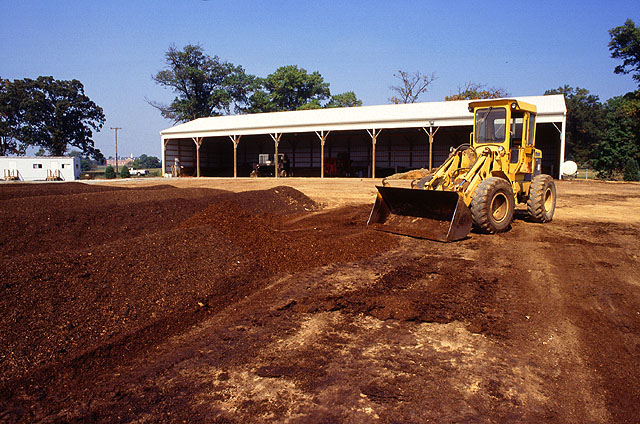
Where to Go?
Look for a site with these characteristics:
- Elevated and away from water. Find an upland site, away from water bodies and built with a gentle slope of about 2% that drains away from water bodies. (New Jersey requires a minimum of 100 feet from surface waters.) Avoid steep slopes and build windrows that run up and down the slope, not across, so runoff will flow naturally between your piles.
- Away from neighbors and with the wind. To reduce odor concerns, consider both wind direction and who might be downwind.
- Away from high water tables, which create several problems: They can flood the site, drowning and suffocating your hardworking microbes. They increase the potential for groundwater and surface water contamination if the site floods. They make it tough for your equipment and vehicles to access the site.
- Protected from storm water runoff. Use berms, compost socks, ditches or drains to divert and direct runoff to safe places.
How Big?
Size will depend on both your volume and your process, which affects how long your compost piles will be around. Plan space for:
- active windrows
- curing piles
- storing bulking materials
- equipment
Depending on your sales strategy, you may need room for screening, bagging, and loading areas for customers or distributors. If you're wondering how to go about your sales strategy, check out Section 1: Marketing Your Manure.
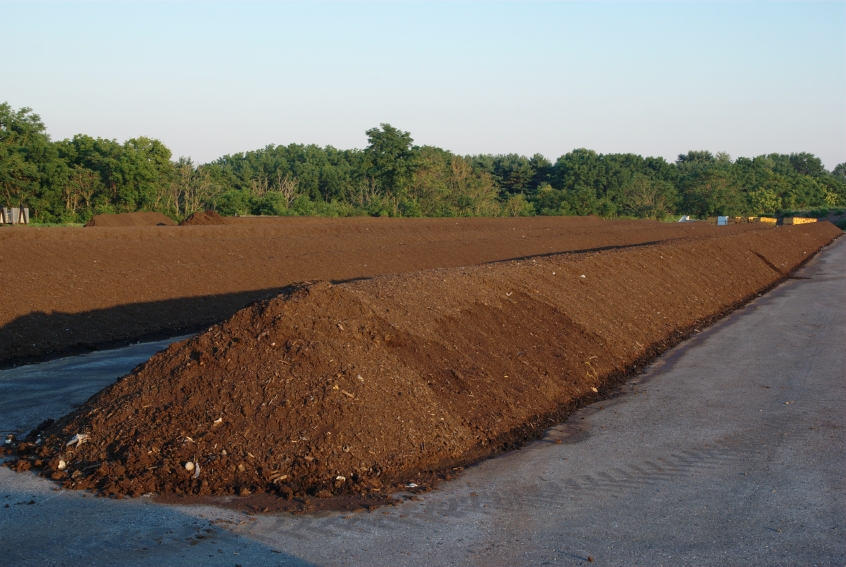
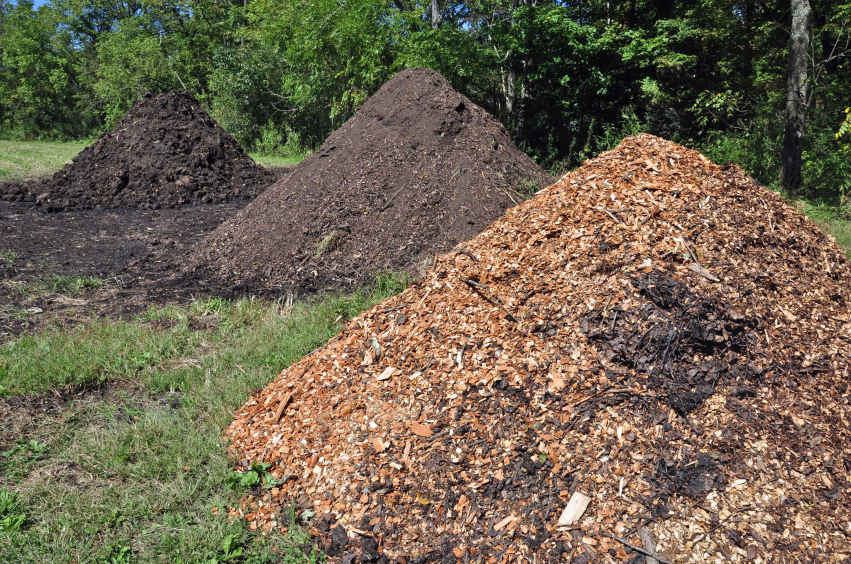
Where Will the Water Flow?
When creating a pad, think carefully about managing water. As water filters through a pile, compost operations can produce leachate, which has the potential to contaminate surface and groundwater. You can reduce leachate production by:
- laying down a bed of carbon-heavy bulking materials to absorb moisture
- installing a berm to divert rainwater from entering the pile
You have several management options for leachate generated:
- collect it in a tank
- control and filter it with a compost berm or sock
- filter it with vegetation
- store it in a lagoon
Collect it in a Tank
You can grade the pad to direct leachate into a tank and dispose liquid by:
- adding it to the pile to increase moisture levels
- applying it to crops (click here to learn more about compost liquid)
- hauling it to a sewage treatment plant.
By mixing solids to suspend them in the liquid, you can remove most solids when you extract the liquid. Expect some to remain in the tank, however, but don’t let them build up. As they accumulate, they’ll smell badly and may reduce the useful life of your tank. Those solids can be hauled away by a septage collection service.
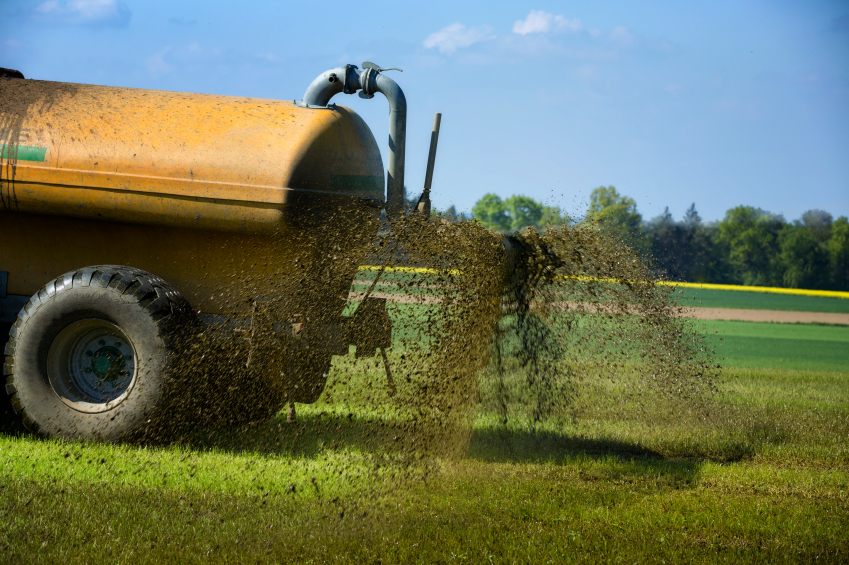
Control and Filter it with Compost Berms or Socks
You can build a berm of finished compost to control runoff. The berm should be 24” tall x 24” wide and built perpendicular to the slope of the pile. Some composters prefer to create compost socks by filling cloth tubes with finished compost.
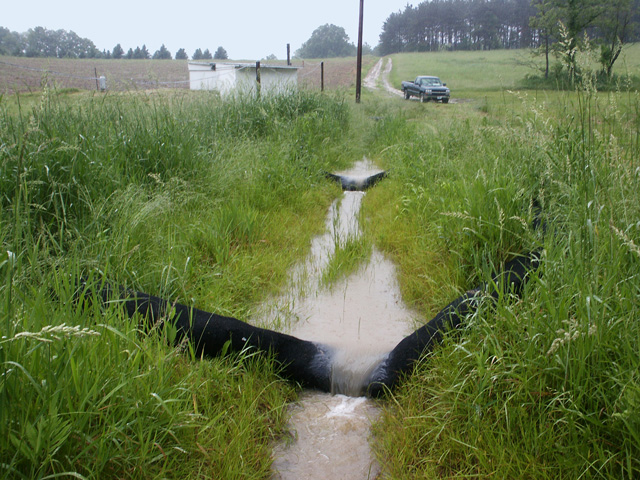
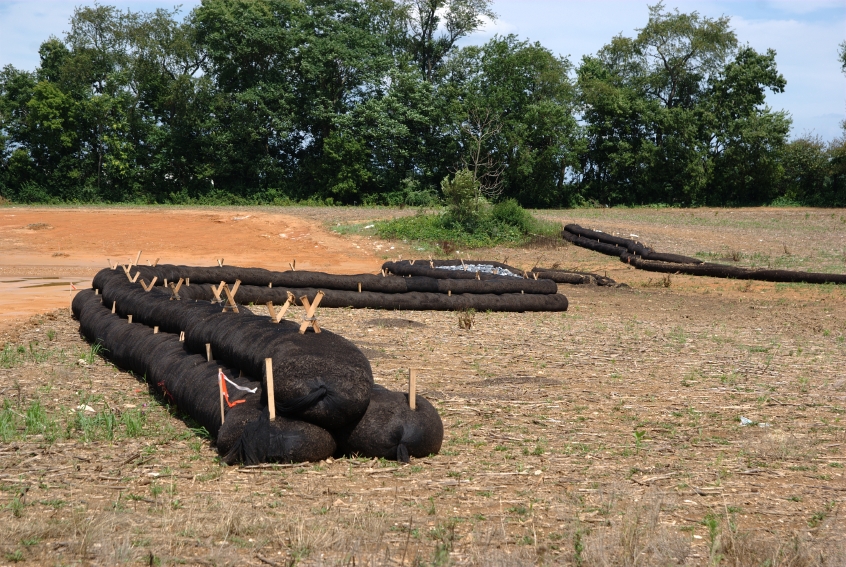
Filter it with vegetation
Vegetation helps absorb nutrients and allows solids to settle out before they reach water surface waters. Review the concise NRCS Conservation Practice Standards for filter strips for compost pads to learn how to manage your compost runoff with vegetation.
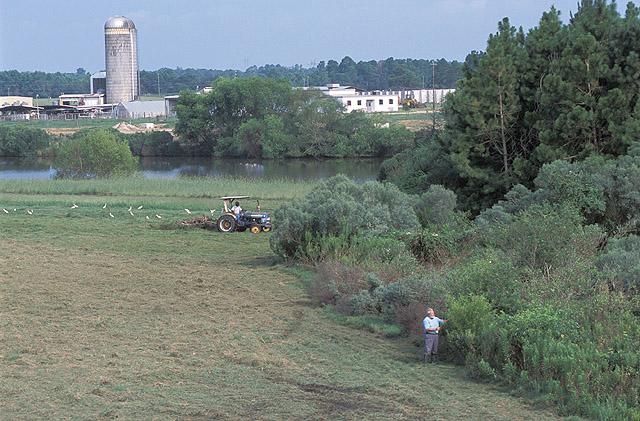
Store it in a Lagoon
Retention ponds can provide capacity to hold water generated by normal operations and by storm events. Lagoons should be designed, built and, operated to protect water quality by addressing these questions.
- Is a discharge permit required?
- How do I move and manage solids? They can be applied back into the compost pile but if their moisture content is too high, they may need to be dried first.
- How do I prevent pollutant-loading at discharge points? Consider a sand filter for that purpose.
- How do I manage seasonal water volumes? To ensure lagoons don't overflow from runoff or snow melt, you may need to lower or empty lagoons before local weather produces peak flows. Liquids can be applied to field crops, back into the compost pile as a moisture source, or hauled to a sewage treatment plant.
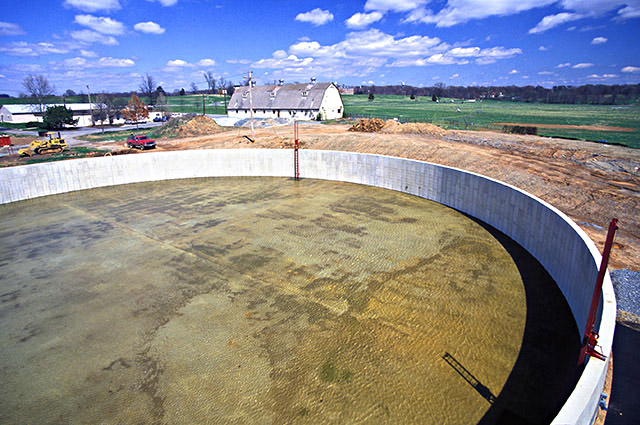
How We Can Protect Water Quality
The NJ Department of Agriculture has developed 14 Best Management Practices (BMPs) specifically for Manure and Farm Waste Management. They aim to achieve these six basic goals for water quality protection.
- reduce soil erosion and minimize sediment loads to surface waters;
- limit discharges from livestock facilities to surface and ground waters;
- maximize nutrient use efficiency and minimize excessive nutrient loading into surface and ground waters;
- reduce contamination of surface and ground waters from pesticides;
- protect sensitive areas, such as wetlands and stream banks, from impacts from livestock grazing, and;
- minimize pollutant discharge to surface and ground waters from irrigation practices
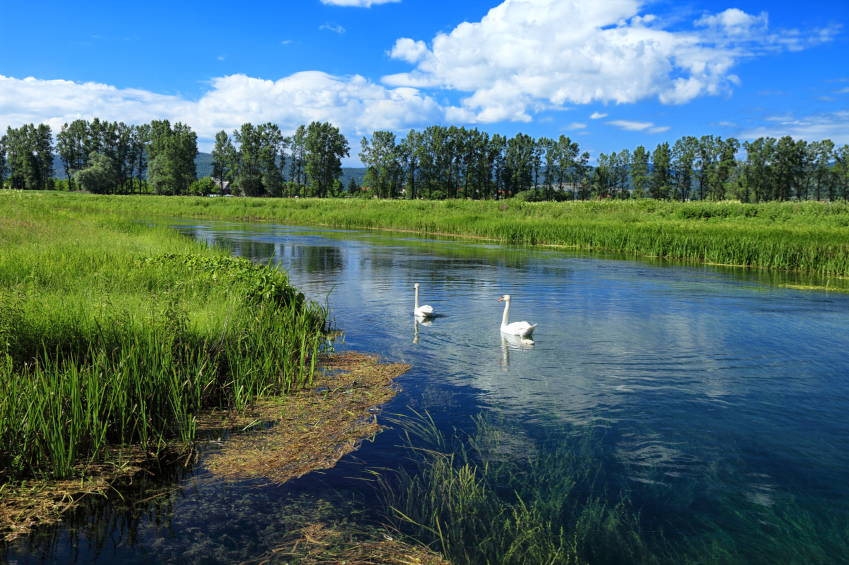
Learn More:
- Review the concise NRCS Conservation Practice Standards for filter strips for compost pads to learn how to manage your compost runoff with vegetation.
- Learn how to apply compost liquids to crop fields from Cornell University.
- View (or download) the New Jersey Department of Agriculture's "On-Farm Strategies to Protect Water Quality" guide. Check out numbered pages 52-57 (PDF pages 54-59) for a summary of best practices.
- Read Rutgers Cooperative Extension's guidance on storing and managing compost on small farms.
- Video: This video from Rutgers Cooperative Extension introduces the goals and strategies for creating vegetative filter strips that can help achieve our six water quality protection goals.
- Video: Jean Bonhotal of Cornell University provides details on selecting good sites / locations for compost piles.
- Check out this Cornell University fact sheet on Compost Pad selection, sizing, siting and construction.
